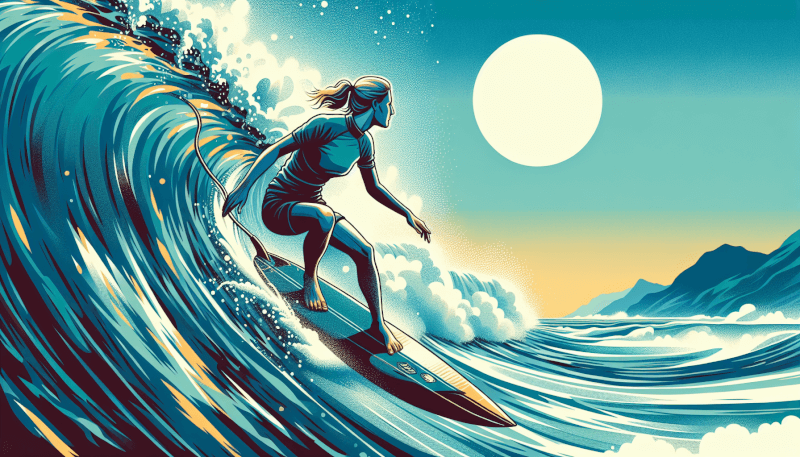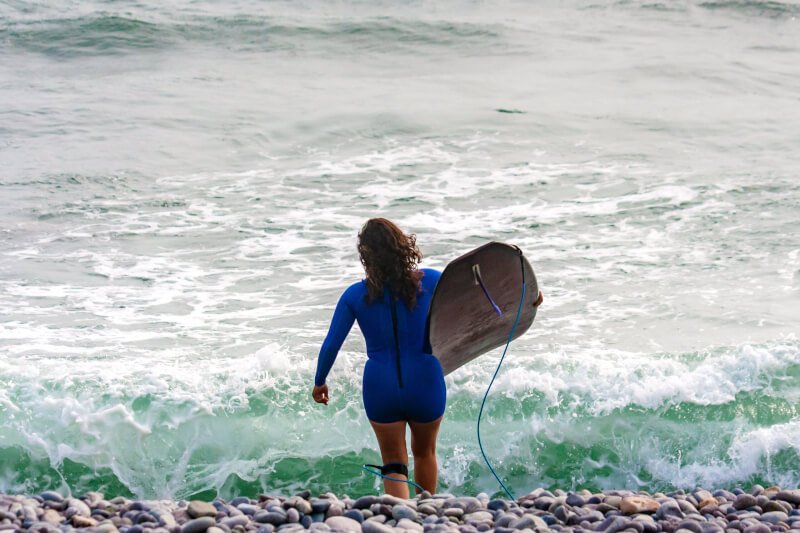If you’ve always wanted to experience the thrill of riding the waves in sunny Florida, then this article is for you. Whether you’re a complete beginner or have some basic surfing skills, these tips will help you make the most of your time in the water. From choosing the right board to perfecting your stance, we’ve got you covered. So grab your board, put on your sunscreen, and get ready to catch some waves with these essential surfing tips for beginners in Florida.
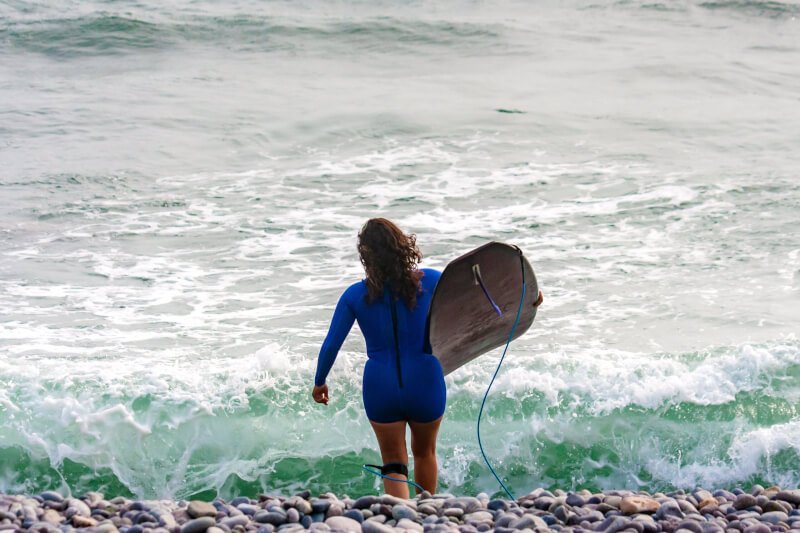
Choosing the Right Surfboard
Identify your skill level
Choosing the right surfboard is crucial to ensure an enjoyable surfing experience. The first step is to identify your skill level. If you are a beginner, it is recommended to start with a longboard or a foam board. These boards provide stability and buoyancy, making it easier for beginners to catch waves and maintain balance. Intermediate and advanced surfers can opt for shorter boards that allow for greater maneuverability.
Consider wave conditions
The next factor to consider when choosing a surfboard is the wave conditions in your area. Different surfboards are designed for specific wave types. On days when the waves are small and mellow, a longboard or a fish-shaped board would be ideal. For bigger and more powerful waves, a shortboard or a gun board is more suitable. It is important to match your board to the prevailing wave conditions to maximize your surfing experience.
Choose the right size
Size matters when it comes to surfboards. The size of the board depends on your body weight and height. Ideally, beginners should start with a larger board as it provides more stability. As your skills progress, you can gradually decrease the size of your board. It is always recommended to consult with a surf shop professional who can guide you in choosing the right size based on your individual physique and skill level.
Opt for a soft-top board
For beginners, opting for a soft-top board is highly recommended. Soft-top boards have a foam deck which offers more cushioning, reducing the risk of injuries. These boards are also more forgiving and easier to control. Moreover, the soft deck provides extra traction, ensuring a stable platform for beginners to learn and progress their skills. Soft-top boards are widely available and can be rented from surf shops or purchased as an affordable option for beginners.
Understanding Wave Breaks
Identify the beach break
When it comes to surfing, understanding the different types of waves and wave breaks is essential. A beach break is the most common type of wave break and occurs when waves break over a sandy bottom. These breaks tend to offer a variety of wave types, making them suitable for surfers of all skill levels. Beach breaks can be unpredictable, with waves breaking in different directions. It is important to study the wave patterns and identify the safest and most suitable areas to paddle out.
Learn about point breaks
Point breaks are another type of wave break that is formed when waves break along a headland or a point of land. These breaks are known for producing long and consistent waves that peel from one direction. Point breaks are ideal for intermediate to advanced surfers as they provide longer rides and more opportunity for maneuvers. However, it is important to be cautious of rocks and shallow areas near point breaks, as they can pose a risk of injury.
Understand reef breaks
Reef breaks occur when waves break over a reef or coral bottom. These breaks are typically found in tropical locations and are known for producing powerful and hollow waves. Reef breaks can be challenging and are often reserved for experienced surfers. It is important to exercise caution when surfing reef breaks, as the shallow reef can cause injuries if one falls off the board. It is recommended to surf reef breaks only if you have the necessary experience and skill level.
Mastering Basic Techniques
Paddling
Paddling is a fundamental skill that every surfer must master. It is important to paddle efficiently to navigate through the water and catch waves. Proper paddling technique involves using your arms to pull the water towards you in a circular motion. Keep your body positioned on the center of the board and maintain a steady rhythm. Building strength and endurance through regular paddling practice will greatly enhance your surfing experience.
Pop-up technique
The pop-up technique is used to transition from lying on your stomach to standing on the board. Start by placing your hands flat on the board near your shoulders. Use your arms to push your upper body off the board while simultaneously bringing your back foot forward and planting it on the board. As you push up, swiftly bring your front foot forward and land in a stable stance. Practicing the pop-up technique on land before taking it to the water will help you perfect the motion and increase your chances of successfully standing up on the board.
Stance and balance
Maintaining a proper stance and balance on the board is crucial for stability and control. Keep your feet shoulder-width apart, with your knees slightly bent. Distribute your weight evenly throughout the board to maintain balance. It is important to keep your gaze focused on the horizon rather than staring down at your feet. Practice your stance and balance on the board both on land and in the water to develop muscle memory and improve your overall stability while surfing.
Learning to steer
Once you have mastered the basic techniques of paddling and standing up on the board, it is important to learn how to steer. Steering involves shifting your weight and placing pressure on different parts of the board to control your direction. To turn left, shift your weight slightly towards the left side of the board. To turn right, shift your weight towards the right side. It is important to practice steering in different wave conditions to develop the necessary skills to navigate the waves effectively.
Safety Precautions
Check weather and surf forecasts
Before heading out for a surf session, always check the weather and surf forecasts. Pay attention to wind conditions, tides, and wave size. Avoid surfing during storms or when there are hazardous conditions. It is advisable to check multiple reliable sources for accurate and up-to-date information. Being aware of the weather and surf conditions will help you make informed decisions and ensure your safety while surfing.
Surf with a buddy
Surfing with a buddy is not only more enjoyable but also safer. Having someone with you in the water increases the chances of getting help in case of an emergency. If you are a beginner, it is especially important to have an experienced buddy who can provide guidance and support. Additionally, surfing with a buddy creates a sense of camaraderie and shared experiences, enhancing your overall surfing journey.
Avoid crowded areas
While it may be tempting to join the crowded lineup, it is important to prioritize your safety. Surfing in crowded areas increases the risk of collisions and accidents. Additionally, experienced surfers may feel frustrated by beginners who are still learning the ropes. Start by surfing in less crowded areas where you can learn and progress at your own pace. As you gain confidence and competence, you can gradually surf in busier lineups.
Know your limits
One of the most important safety precautions is to know your limits. It is crucial to assess your skill level honestly and not to push yourself beyond your capabilities. If the conditions are too advanced or if you are feeling exhausted, it is better to stay onshore and wait for more suitable conditions. Surfing should be an enjoyable experience, and pushing yourself too hard can lead to injuries and accidents. Listen to your body and trust your instincts when it comes to your surfing abilities.
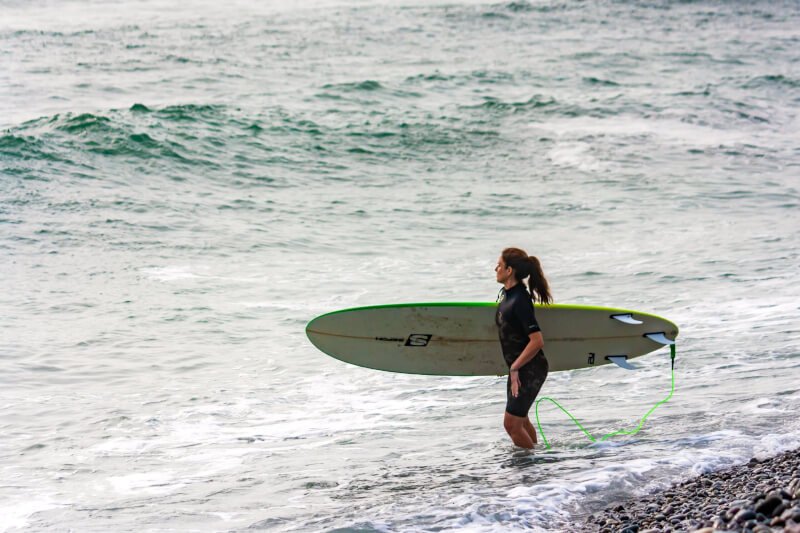
Choosing the Right Spot
Find beginner-friendly beaches
When you are starting out as a beginner, it is important to find beginner-friendly beaches. These beaches typically have smaller and gentler waves, making it easier for beginners to practice their skills. Look for beaches with long sandbars or shallow areas, as they tend to produce slower and more manageable waves. Beginner-friendly beaches often have surf schools or local instructors who can provide guidance and support as you learn to ride the waves.
Look for smaller and slower waves
As a beginner, it is important to choose spots with smaller and slower waves. Large and powerful waves can be overwhelming and dangerous for inexperienced surfers. Smaller waves allow beginners to build confidence and practice their techniques without being overly challenged. Slower waves also provide more time to paddle, catch the wave, and safely ride it. Starting small and gradually progressing to larger waves will ensure a safe and enjoyable surfing experience.
Avoid areas with strong currents
When choosing a surf spot, it is crucial to avoid areas with strong currents. Strong currents can quickly sweep you away from your intended path and make it difficult to paddle back to shore. Before entering the water, observe the current flow and patterns. If you notice a strong lateral current or a rip current, it is advisable to choose a different location or consult with local surfers who are familiar with the area. Your safety should always be a priority in the water.
Understanding Etiquette
Respect local surfers
Surfing etiquette is crucial for maintaining a harmonious surfing environment. Respect for local surfers is of utmost importance. When surfing at a new spot or in an area with regulars, it is essential to observe and learn from the locals. Avoid dropping in on others’ waves, cutting someone off, or hogging all the waves. Showing respect and consideration towards others will help create a positive atmosphere in the lineup and ensure that everyone gets a fair share of waves.
Learn the right-of-way rules
Understanding the right-of-way rules is essential for preventing collisions and accidents in the water. In general, the surfer closest to the breaking part of the wave has the right of way. If someone is already riding a wave, it is important to avoid paddling into their path. Additionally, it is crucial to yield to more experienced surfers who may be able to ride the wave more effectively. Learning and following the right-of-way rules demonstrate good surfing etiquette and contribute to a safer surfing environment.
Wait for your turn
Patience is a virtue when it comes to surfing. Waiting for your turn is an essential part of surfing etiquette. Waves come in sets, meaning there may be several waves breaking in quick succession followed by a lull. It is important to wait for the appropriate time to paddle for a wave, ensuring that you are not interfering with someone else’s ride. Rushing and constantly paddling for every wave can lead to chaos in the lineup and may result in collisions. Respect the rhythm of the lineup and take turns with other surfers.

Essential Equipment
Surfboard leash
A surfboard leash, also known as a leg rope, is a vital piece of equipment for surfers of all levels. The leash attaches to your ankle and keeps your surfboard attached to you, preventing it from drifting away in the water. In case you fall off your board, the leash allows you to retrieve your board quickly and avoid incidents with other surfers. When choosing a leash, make sure it is the appropriate length for your board and conditions.
Wax
Wax is applied to the deck of the surfboard to provide traction and prevent slipping. Without wax, it would be extremely difficult to maintain balance and control on the board. The type of wax to use depends on the water temperature and the type of surfboard. Cold water wax is harder, while warm water wax is softer. Applying a fresh coat of wax regularly will ensure maximum grip and improve your overall performance while surfing.
Sunscreen
Protecting your skin from the sun’s harmful UV rays is essential when spending extended periods of time in the water. Choose a high SPF sunscreen that is suitable for water activities and apply it generously before heading out into the surf. Reapply sunscreen every few hours or after getting out of the water. Sunburn can not only be painful but also increase your risk of skin damage. Be proactive and take care of your skin while enjoying the waves.
Rash guard or wetsuit
In colder water temperatures, a rash guard or wetsuit is necessary to keep your body warm. A rash guard is a lightweight shirt that protects the skin and offers some insulation. Wetsuits, on the other hand, are thicker and provide better insulation in cold water. Wetsuits come in different thicknesses, so choose one that suits the water temperature in your area. Wearing a rash guard or wetsuit will help regulate your body temperature and extend your surfing sessions in cooler conditions.
Building Strength and Endurance
Swimming
Swimming is an excellent exercise for building strength and endurance, both of which are crucial for surfing. Regular swimming sessions will improve your cardiovascular fitness and strengthen your arm and leg muscles. Focus on different swimming strokes to engage different muscle groups and simulate the movements required for paddling in the water. Swimming also helps improve your breathing control, allowing you to stay calm and composed while navigating the waves.
Balance and core exercises
Building balance and core strength is essential for maintaining stability on the surfboard. Incorporate exercises such as yoga, Pilates, and balance training into your fitness routine. These exercises target the muscles in your core, legs, and lower back, which are crucial for maintaining a strong and stable stance while surfing. Practice standing on balance boards or stability balls to improve your overall balance and mimic the movements required while riding a wave.
Cardiovascular workouts
Engaging in cardiovascular workouts, such as running or cycling, will help improve your overall fitness and endurance for surfing. These activities elevate your heart rate and increase your lung capacity, allowing for longer and more energetic surf sessions. Cardiovascular workouts also contribute to weight management and enhance your overall physical well-being. Incorporate these activities into your weekly routine to stay fit and ready to tackle the waves.
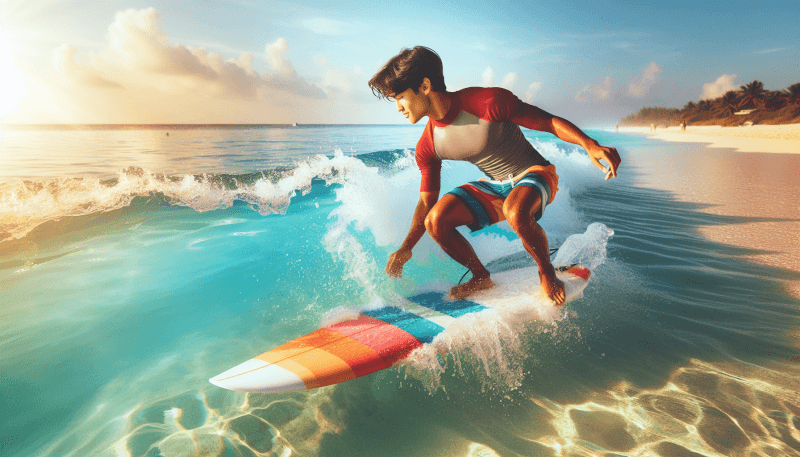
Tips for Catching Waves
Timing is key
Timing is crucial when it comes to catching waves. Watch the wave sets and observe their rhythm. You want to paddle at the right moment to catch the wave as it is about to break. Paddling too early or too late can cause you to miss the wave or get caught in the whitewash. Developing the ability to read the waves and time your paddling will greatly increase your chances of catching waves and having successful rides.
Position yourself properly
Positioning yourself properly is essential to catch waves effectively. When you are in the lineup, find a spot where the waves are breaking and look for the area where the waves form a peak. Position yourself slightly outside or in front of the lineup to get the best opportunity to catch waves. It may take some practice and observation to find the ideal spot, but with experience, you will be able to position yourself strategically and catch waves consistently.
Paddle with determination
Paddling with determination is crucial to generate enough speed and power to catch the wave. Use strong and purposeful strokes to propel yourself forward. A weak and hesitant paddle will not allow you to match the speed of the wave. Dig your hands deeply into the water and kick your legs with intent. It may require some effort and practice to build the necessary paddling strength, but with time, you will develop the power to successfully catch waves.
Pop-up quickly
Once you have caught a wave, it is important to pop-up quickly and smoothly to a standing position. The pop-up should be a fluid motion that allows you to transition from lying on your board to standing on it. The faster and more efficient your pop-up, the better chances you have of maintaining your balance and riding the wave successfully. Practice the pop-up technique regularly on land to build muscle memory and improve your pop-up speed in the water.
Progressing as a Surfer
Take surf lessons
Taking surf lessons, especially as a beginner, can significantly accelerate your progress as a surfer. Surf lessons provide structured guidance from experienced instructors who can teach you proper technique, safety practices, and wave knowledge. They will help you develop good habits and correct any mistakes in your form. Additionally, instructors can offer valuable insights and advice specific to your individual skill level, helping you progress at a faster pace.
Surf regularly
Consistency is key when it comes to progressing as a surfer. Make an effort to surf regularly, even if it is just for a short session. The more time you spend in the water, the quicker your skills will develop. Regular practice will strengthen your paddling, improve your timing, and increase your confidence in the water. Commit to a routine and make surfing a priority in your life, and you will see noticeable progress in your surfing abilities.
Challenge yourself gradually
As you become more comfortable with the basics of surfing, it is important to challenge yourself gradually. Start by attempting smaller and easier waves, and as you gain confidence and improve your skills, gradually progress to larger and more challenging waves. Pushing your limits in a controlled manner will help you improve and expand your surfing abilities. Always be mindful of your safety and never take on waves that are beyond your skill level.
Observe and learn from experienced surfers
One of the best ways to progress as a surfer is to observe and learn from experienced surfers. Watch how they position themselves, how they paddle, and how they navigate through the waves. Take note of their technique, wave selection, and rhythm. Observing experienced surfers will provide you with valuable insights and inspiration to improve your own surfing. Additionally, don’t hesitate to ask for advice or tips from more experienced surfers, as they are often willing to share their knowledge and help fellow surfers progress.
